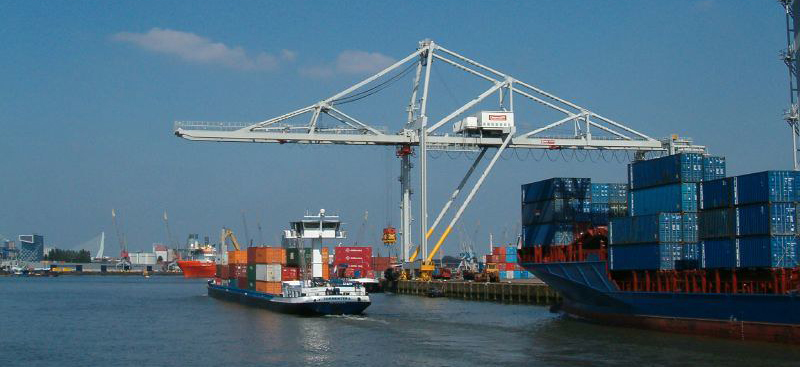‘The real shock to world trade is still coming’

Interview with UG economist Marcel Timmer
‘The real shock to world trade is still coming’
As contagious as corona is, so is the economic damage caused by the virus. Countries are infecting countries, and companies are infecting other companies. One of the economists hard at work to understand the situation is Marcel Timmer, UG professor of economic growth and development.

Timmer works two jobs. He recently became deputy chair for the Bureau for Economic Policy Analysis (Centraal Plan Bureau, or CPB), which writes policy advice for the government. This advice is sorely needed these days.
The CPB recently published four medium-term scenarios. In two of these, unemployment in 2021 will be higher than after the economic crisis of 2008. But Timmer won’t and can’t say which of the four scenarios is the most likely to occur. There are too many uncertainties.
The coronavirus is what’s known as an exogenous shock to the economy. Are there any example from the past we could learn from?
‘Not many. Natural disasters would be the most logical analogy, like the tsunami in Japan or hurricane Katrina in Louisiana. This situation is more similar to a natural disaster than the financial crash of 2008, or the crisis we had in the Netherlands in the early eighties.
The latter was a longer crisis that came up more slowly. It resulted in extremely high unemployment, 10 percent, and large government debts. For the euro zone, there are criteria that a government debt is not allowed to be higher than 60 percent of its GDP (editor’s note: gross domestic product, the total monetary value of all the final goods and services produced in a country). Only seven countries in the euro zone actually meet those criteria.
Plus, the literature teaches us that government debts up to 100 percent barely impact growth. The current Dutch government debt is at approximately 52 percent. The biggest takeaway from the CPB scenarios that even in the worst-case scenarios, the government debt will stabilise at 78 percent of the GDP, far less than a 100 percent.’
What can we learn from these crises from the past?
‘Honestly, not that much. Those natural disasters were happened locally and were confined to a single country. In that case, the central government of country can help out the region. But this is a case of disasters happening simultaneously in various country, and each country is responding to it in their own way. That’s what makes this so difficult.
Take what’s happening in the Netherlands: we’re suffering from our own supply shock (a sudden decline in the supply of goods and services), but in the near future, we’ll also be impacted by the demand and supply shock in other countries. Looking at the US, I can already predict that the demand for goods from the Netherlands will decline over the next few months. It’s not looking great.’
Especially with the Netherlands being an export country.
‘We’re very dependent on world trade, as we’re one of the most open economies in the world. That’s one of the biggest worries for the Dutch economy right now: how the world trade will develop over the next few months. The signs that we’re seeing show that there’s a sharp decline taking place right now, but we’re missing real-time data. They’re slow coming in.
The real shock to the world trade as registered in the statistics is still to come. The World Trade Monitor has a two-month delay. A sharp decline in March wouldn’t show up until May.
That’s interesting right now: people are trying to develop new indicators based on big data. Although that is less reliable than official statistics. We’re talking to the harbour company in Rotterdam, for example, asking if they can already see what’s going on? They have a real-time overview of the containers coming in. That’s how we’re trying to collect data.’
Professor Steven Brakman recently said that he expects the world trade to shrink beyond even what happened after the 2008 crisis. How does the corona crisis relate to the economic crisis we just got through?
‘I’m not going to say which scenario is most likely to happen. But it’s never a good idea to underestimate something like this. I’m not really seeing people do that. Reading about the expectations of national and international banks, think tanks, and institutes, it’s all pretty bleak.
Although none of it’s based on a lot of data just yet. It could be that they’re all just copying each other, but just consider for a moment what’s happening in the world right now: there are these intense shocks to the system happening to various countries simultaneously. Even without knowing how that’s going to turn out, it’s clear that it’s a pretty unique thing to happen to this world post-war.
The current shock is still ongoing. The US hasn’t reached the end yet, and the question remains whether China will reach the end or experience another shock. The end has yet to come into sight in Spain or Italy. The uncertainty remains.’



